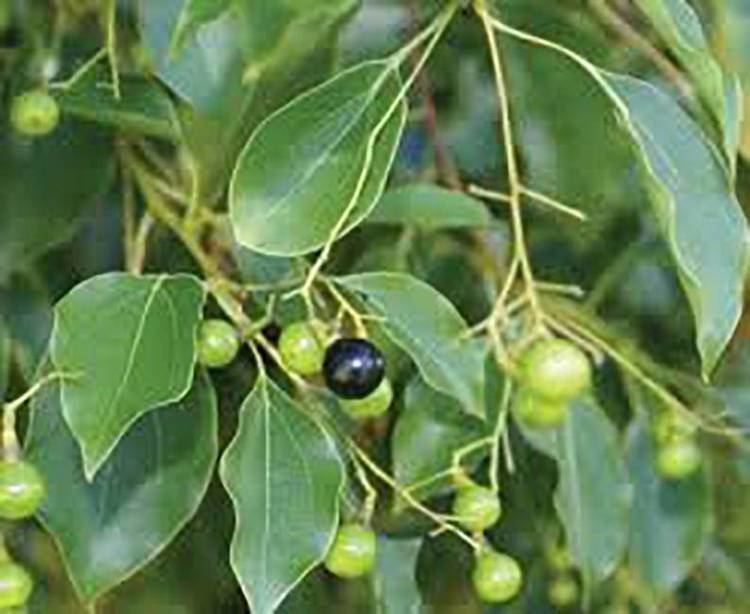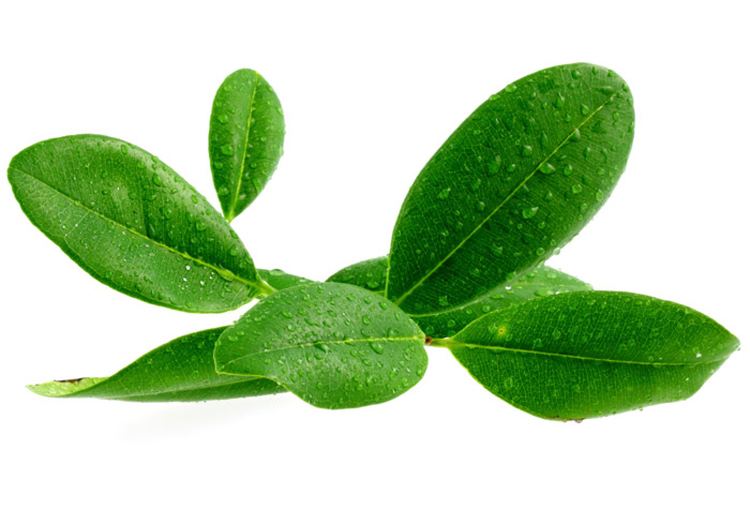Kingdom Plantae Family Lauraceae Higher classification Lauraceae | Order Laurales Scientific name Ravensara Rank Genus | |
 | ||
Similar Ravensara aromatica, Melaleuca quinquenervia, Eucalyptus radiata, Cymbopogon martinii, Amyris | ||
Essential oil wizardry by dr nick ravensara
Ravensara is a genus of trees and shrubs belonging to the family Lauraceae and endemic to the island of Madagascar (Central and Eastern regions) and the Comoro Islands. The bark, leaves and fruit of the various species are rich in aromatic essential oils. In a recent generic classification of Lauraceae based on DNA sequence data by Chanderbali et al. in 2001, it was found to be part of a strongly supported clade that also includes Beilschmiedia, Potameia, Cryptocarya, Endiandra and Aspidostemon.
Contents

Overview

The best-known species is Ravensara aromatica, the essential oil extracted from the leaves of which is used in medicine. In Madagascar the common name in the Malagasy language applied to trees of this genus is Hazomanitra - 'tree that smells', while that of the bark of Ravensara anisata is Havozo. Ravensara is a genus of evergreens in the plant family Lauraceae that currently includes around 30 species, mostly in laurel forest habitat. The genus Ravensara, endemic to Madagascar, was described by Sonnerat in 1782 with the single species Ravensara aromatica. Kostermans maintained Ravensara in his treatment of the Lauraceae for the "Flore de Madagascar et des Comores" and in a later publication from 1958 in which he described a furtherl nine new species. Ravensara has always been considered closely related to Cryptocarya. While the Madagascan species placed in Ravensara and Cryptocarya are still poorly known, the subsuming of Ravensara in Cryptocarya is not justified by the results of the DNA studies undertaken thus far. Furthermore the fruits of Ravensara spp. are of ruminate form, while those of the Madagascan species of Cryptocarya are not.
Characteristics

The genus includes species of evergreen trees, endemic to Madagascar and Comoro Islands. Ravensara species are broad-leaved evergreens, the genus including not only shrubs, but also large trees reaching heights in excess of 30 m at maturity. They are found commonly both as canopy trees to 30m (sometimes very large to 60 m) and sub-canopy trees in the succession climax species in tropical, lower temperate or subtropical broad-leaved forest. Habitats include evergreen broadleaved forest, mixed coniferous-broadleaved forest, low-elevation evergreen forest and littoral rainforest and feature soils of all types.
The trunks of the arborescent species can reach over a meter in diameter. The twigs are angular, and glabrous, although the terminal buds are densely and minutely puberulous. The dark green, shiny leaves are alternate, obovate to obovate-elliptic, 6-11 × 3–6 cm, glabrous, stiffly coriaceous, the base acute, rarely obtuse, margin flat, the apex rounded, the lower surface minutely but densely dotted with oil glands. Lateral veins 4-6 on each side, reticulation raised on both surfaces, petioles glabrous, 9–14 mm long. Inflorescences 3.5–9 cm long, paniculate, branched from the base, glabrous; bracts along inflorescences mostly deciduous, 1.5 mm long, linear, pubescent. Flowers yellow-green, externally glabrous, tepals initially half-erect, in old flowers spreading, flowers 4–5 mm in diameter; pedicels short, from half the length of the floral tube to equaling it; having six tepals equal, narrowly ovate, 1.5–2 mm long, glabrous outside, puberulous inside; stamens 9, all 2-celled, pubescent, c. 1 mm long, the filament very short, 0.1-0.2 mm, the anther cells large, the connectives slightly prolonged beyond the anther cells; stamens with the same length and width as the tepals and hidden behind them; 2 small globose glands present at the base of the inner three stamens; staminodia small, narrowly ovate, pubescent; pistil glabrous, the style to 1 mm exserted, receptacle tubular, pubescent near the rim, otherwise glabrous. Fruits are fleshy. The fruit, a berry, are an important food source for birds, usually this birds are from specialized genus: Columbidae, Turdidae, etc. Seeds are spread by birds. Birds eat the whole fruit and regurgitate seeds intact, distributing the seeds in the best conditions for germination (ornithocory).
Only two species of Ravensara have the combination of glabrous twigs and leaves and raised reticulation on both surfaces of the leaves. Of these two, Ravensara macrophylla, only known from the fruiting type, differs in leaf shape (elliptic) and size (16–20 cm long). Like R. glabriflora, it has glabrous flowers, a feature unknown in other members of the genus on Madagascar, although flowering has yet to be observed in 13 of the species.
Ecology
The species native to Madagascar and the Comoro Islands, have differences resulting from ecological adaptations to habitats of varying degrees of humidity. Species from drier habitats tend to be smaller, or less robust, with sparser foliage and possessing a greater number of oil glands, with the result that they are more aromatic than species found in wetter habitats. The genus Ravensara has led to endemic species on islands, but not so widespread geographically as in the past.
The genus Ravensara is becoming endangered, due to low population densities and the felling or unscrupulous exploitation of rainforest habitats. The 'Ravensara oil' of commerce is sourced not only from the named genus, also from the similarly aromatic genus Cryptocarya. Some Ravensara species have a long history of use as sources of essential oils by the pharmaceuticals industry.
The ecological requirements of the genus, are mostly those of the laurel forest and, like most of their Lauraceous relatives in other parts of the globe, the Ravensaras are vigorous,woody plants with the ability quickly to colonise suitable habitats. Like the members of the related Lauraceous genus Machilus, the Ravensaras responded, in the course of their evolution, to favourable climatic periods and spread to colonise the available habitat. The main concentrations of Ravensara species are found at low altitudes in wet habitats in tropical or subtropical montane forests or coastal rainforest or coastal temperate forest. The Ravensara species, native as they are to islands, cannot withstand the severe winters associated with a continental climate, requiring protection from frost if cultivated as garden plants outside the area of their natural distribution.
Species
It contains the following species, but this list is incomplete:
